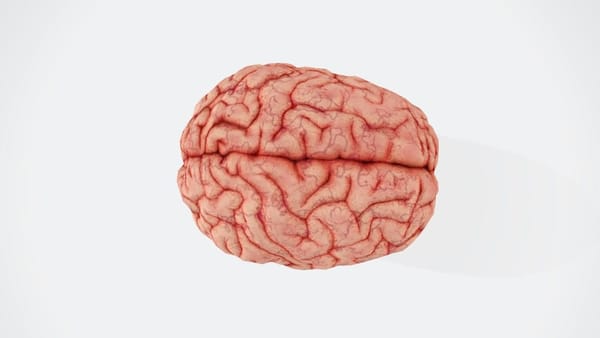Mindfulness meditation has long been touted as an effective method for managing pain, but the exact mechanisms behind its efficacy have remained elusive. A groundbreaking study published in Biological Psychiatry has shed new light on how this ancient practice works to alleviate pain, revealing that it engages distinct brain mechanisms separate from those involved in the placebo effect[1].
Key takeaways:
• Mindfulness meditation significantly reduces pain intensity and unpleasantness
• The practice engages different brain mechanisms than placebo effects
• Meditation alters brain activity patterns associated with pain and negative emotions
The power of the mind in pain management
Pain is a complex experience influenced by various factors beyond physical sensation, including a person's mindset and expectations. While the placebo effect has been well-documented in pain management, researchers at the University of California San Diego School of Medicine have discovered that mindfulness meditation operates through entirely different neural pathways[1].
Unveiling the neural mechanisms
The study employed advanced brain imaging techniques to compare the pain-reducing effects of mindfulness meditation, a placebo cream, and a "sham" mindfulness meditation in healthy participants. The results were striking: mindfulness meditation not only produced significant reductions in pain intensity and unpleasantness ratings but also altered brain activity patterns associated with pain and negative emotions[1].
Distinct brain responses: Unlike the placebo cream, which only reduced brain activity patterns associated with the placebo effect, mindfulness meditation directly modified how participants experienced pain. This finding challenges the long-held assumption that mindfulness meditation works primarily by activating the placebo response[1].
The study's methodology and findings
Researchers conducted two separate clinical trials involving 115 healthy participants. The participants were randomly assigned to four intervention groups: guided mindfulness meditation, sham-mindfulness meditation (deep breathing only), placebo cream, and a control group listening to an audiobook[1].
Using a novel approach called multivariate pattern analysis (MVPA), the researchers were able to disentangle the complex neural mechanisms underlying pain experience. They found that mindfulness meditation was significantly more effective at reducing pain compared to placebo, sham-mindfulness meditation, and controls[1].
Neural pain signal: Mindfulness-based pain relief reduced synchronization between brain areas involved in introspection, self-awareness, and emotional regulation. These areas comprise the neural pain signal (NPS), a documented pattern of brain activity common to various types of pain across individuals[1].
Implications for chronic pain management
The study's findings have significant implications for the development of new treatments for chronic pain. By demonstrating that mindfulness meditation is more powerful than placebo and engages distinct brain mechanisms, the research supports its use as a direct intervention for chronic pain rather than merely a way to engage the placebo effect[1].
Dr. Fadel Zeidan, Professor of anesthesiology and Endowed Professor in Empathy and Compassion Research at UC San Diego, emphasizes the potential of this approach: "The mind is extremely powerful, and we're still working to understand how it can be harnessed for pain management. By separating pain from the self and relinquishing evaluative judgment, mindfulness meditation is able to directly modify how we experience pain in a way that uses no drugs, costs nothing and can be practiced anywhere."[1]
Future directions and accessibility
While the current study focused on healthy participants, further research is needed to demonstrate these effects in people living with chronic pain. The long-term goal is to design more effective and accessible interventions that harness the power of mindfulness to reduce pain in clinical populations[1].
As millions of people live with chronic pain daily, the potential for mindfulness-based interventions to improve quality of life is significant. By understanding the neurobiology of mindfulness, researchers hope to develop targeted approaches that can provide relief to those suffering from persistent pain[1].
In conclusion, this groundbreaking research offers new hope for pain management by revealing the unique neural pathways through which mindfulness meditation operates. As we continue to unravel the complex relationship between mind and body, mindfulness meditation stands out as a powerful, accessible tool for those seeking relief from pain.
To learn more about mindfulness meditation and its potential benefits for pain management, consider exploring guided meditation resources or consulting with a healthcare professional experienced in mind-body interventions.
References:
- Zeidan, F., et al. (2024). Mindfulness meditation engages distinct neural mechanisms to reduce pain. Biological Psychiatry. [Link to be added when available]
- Acabchuk, R. L., et al. (2020). Systematic review and meta-analysis of meditation and mindfulness for concussion and mild traumatic brain injury. Neuropsychology Review. https://www.news-medical.net/news/20201130/First-meta-analysis-looks-at-the-impact-of-meditation-yoga-and-mindfulness-on-concussions.aspx
- University of California San Diego School of Medicine. (2024). Mindfulness meditation reduces pain through distinct brain mechanisms. News-Medical.net. https://www.news-medical.net/news/20240905/Mindfulness-meditation-reduces-pain-through-distinct-brain-mechanisms.aspx












Member discussion